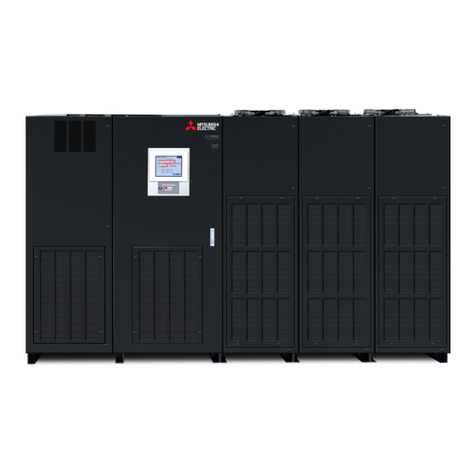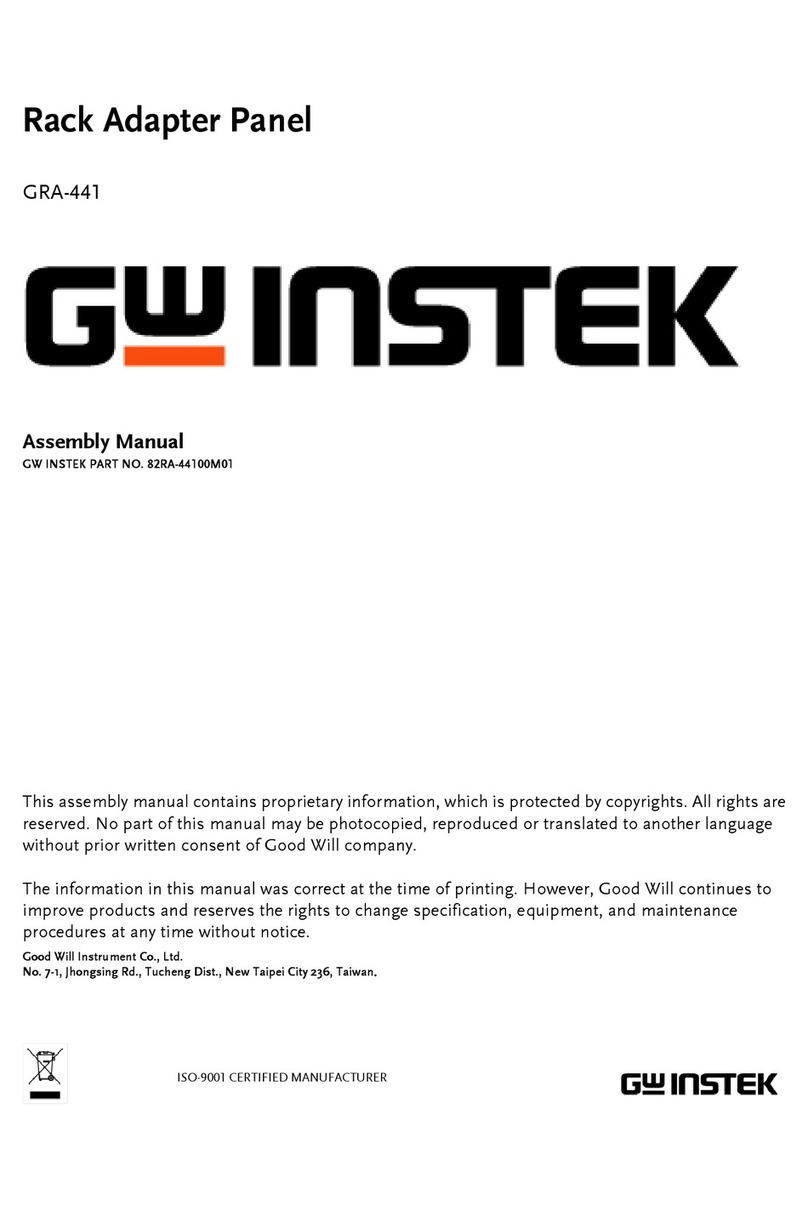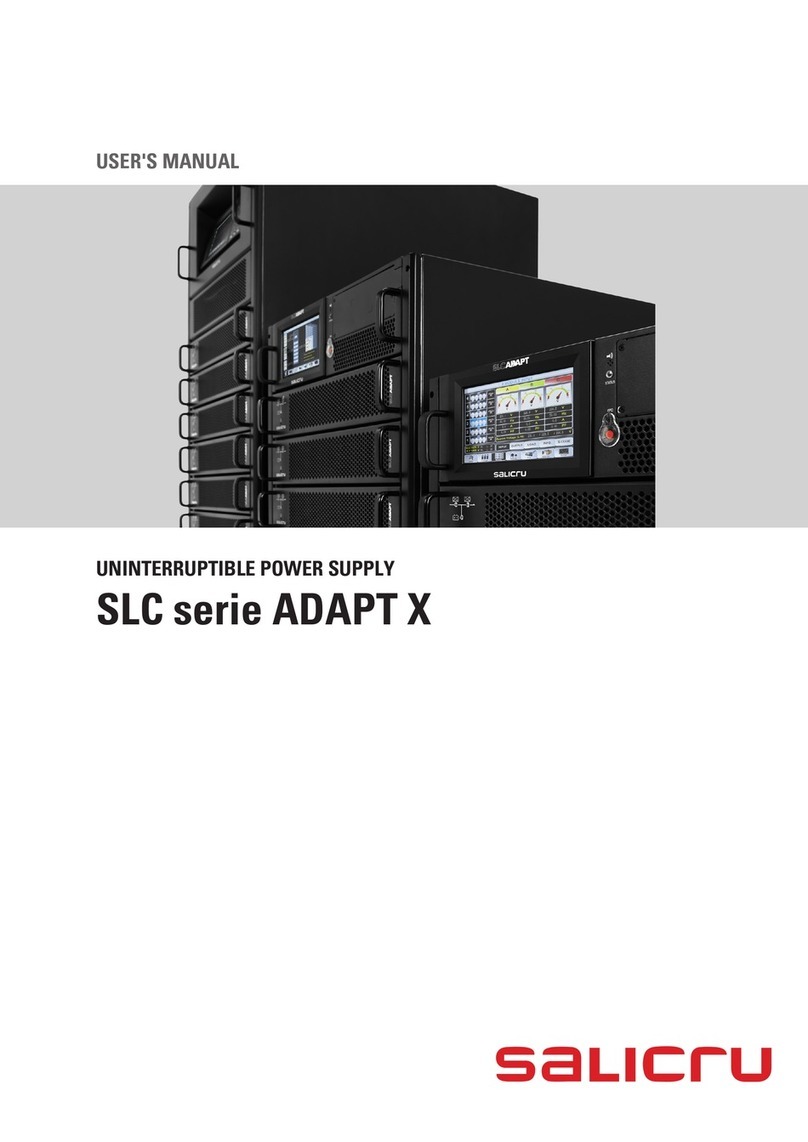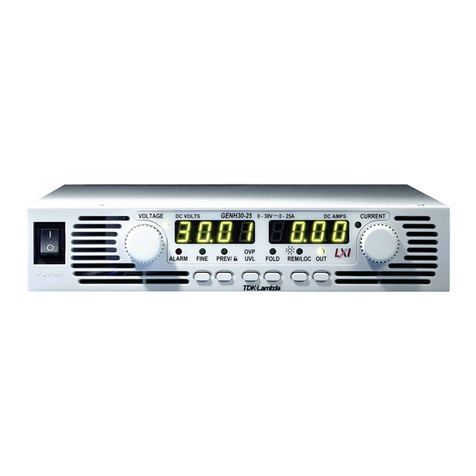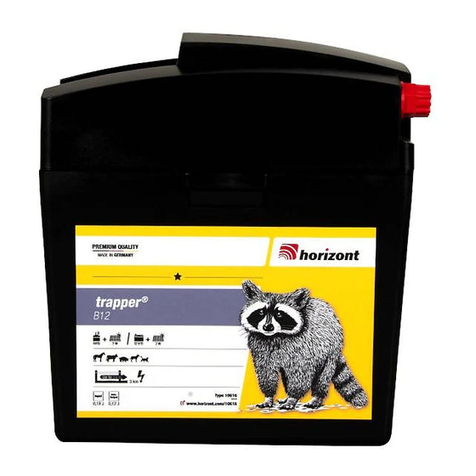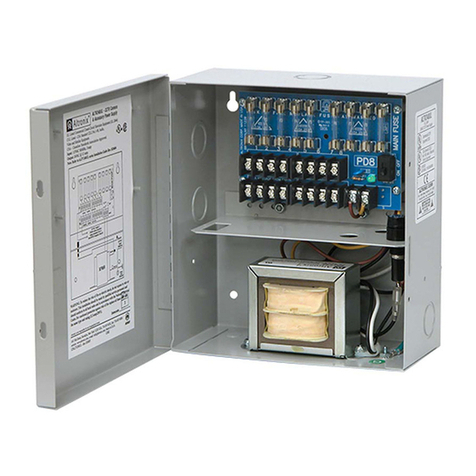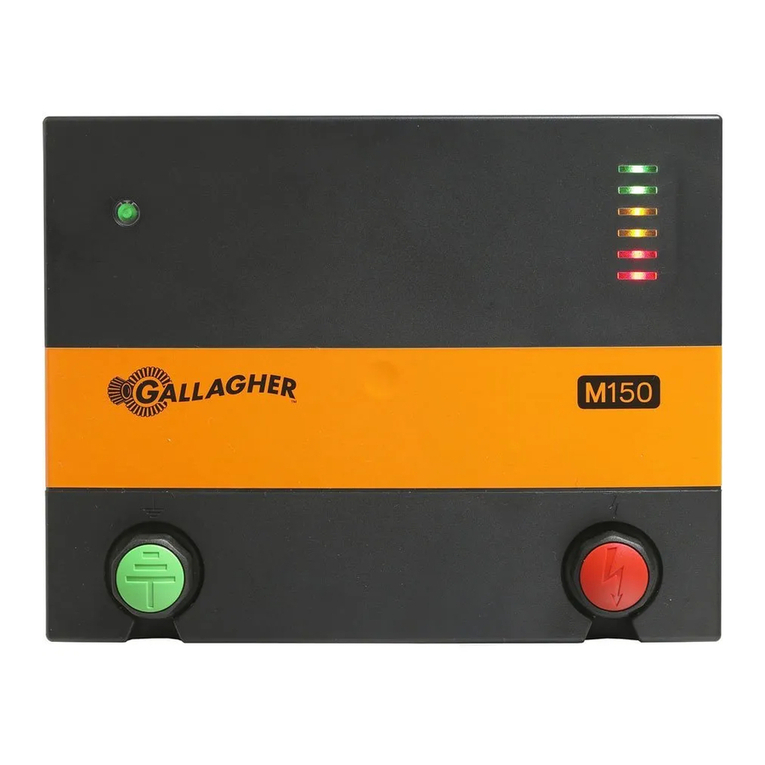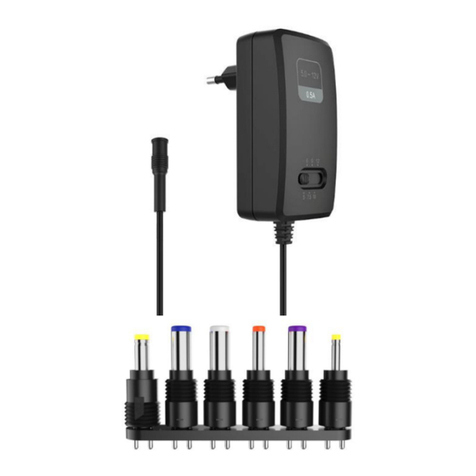GEW RHINO User manual

MODULE 4:
Power Supply Installation
Original Instructions
DOC7001-4-EN
GEW RHINO UV SYSTEM
INSTALLATION
MANUAL

Page 2 of 27 © GEW (EC) Limited 2016
RHINO UV System Installation Manual – Module 4, Power Supply Installation
DOC7001-4-EN-Rev2.0
Contact Details
Address: GEW (EC) Limited,
Crompton Way, Crawley,
West Sussex, RH10 9QR, UK.
Telephone: +44 (0) 1737 824500 – main switchboard
+44 (0) 1737 824510 – service and spares
Website: www.gewuv.com
Distributors: www.gewuv.com/contact
Copyright
Duplication (copying, printing, microfilm or other forms) and the electronic distribution of this
document is only allowed with explicit permission of GEW (EC) Limited. GEW (EC) Limited
reserves the right to change technical data without prior announcement. The general business
conditions and the regulations of the licence agreement do apply. All rights are reserved.

DOC7001-4-EN-Rev2.0 © GEW (EC) Limited 2016
RHINO UV System Installation Manual – Module 4, Power Supply Installation
Page 3 of 27
MODULE 4: Power Supply Installation
1 About This Manual ................................................................................ 5
1.1 Introduction .................................................................................................................. 5
1.2 Symbols, Warnings, Cautions and Information ........................................................... 5
1.3 Installation Manual Structure ....................................................................................... 5
2 About RHINO Power Supplies ............................................................. 7
2.1 Description .................................................................................................................. 7
3 Installing RHINO Power Supplies ...................................................... 11
3.1 Environmental Conditions ......................................................................................... 11
3.2 Locating the RR ......................................................................................................... 11
3.2.1 Lifting and Moving the RR .................................................................................... 12
3.3 RR Distribution Systems and Internal Protection Devices ........................................ 13
3.4 Mains Electricity Supply Requirements ..................................................................... 13
3.4.1 Voltage and Voltage Surveys ............................................................................... 14
3.4.2 Harmonic Demand ............................................................................................... 14
3.5 Connecting the RR to the Mains Electricity Supply ................................................... 14
3.5.1 Earth Connections ................................................................................................ 14
3.5.2 Mains Supply Connection, RR (1 & 2-way) .......................................................... 15
3.5.3 Mains Supply Connection, RR (6 & 8-way) .......................................................... 16
3.6 Transient Suppression .............................................................................................. 17
3.7 Connecting the Power Distribution to the RPSUs ..................................................... 17
3.8 Connecting a RPSU to a GEW Lamphead ................................................................ 17
3.9 Connecting a RPSU to a GEW Autodamper ............................................................. 19
3.10 Connecting the CAN Bus .......................................................................................... 19
3.11 Connecting the RR to the Pneumatic Supply ............................................................ 20
3.12 Connecting the RR to the Cooling Fan(s) ................................................................. 22
3.12.1 Phase Rotation ..................................................................................................... 22
3.13 Connecting the RR to the HMI Panel ........................................................................ 23
3.14 Connecting the RR to the Host Press Interface ........................................................ 24
3.14.1 Wiring Connection to the Host Press Interface .................................................... 25
3.15 Connecting the RR to a Chiller Interlock ................................................................... 26
3.16 Post Installation Checks ............................................................................................ 26
3.17 Completion Checklist ................................................................................................. 26
Document Issue Status
Revision Date Comments
1.0 10.03.16 First Issue - JNO.
2.0 16.03.16 Minor updates - JNO.

Page 4 of 27 © GEW (EC) Limited 2016
RHINO UV System Installation Manual – Module 4, Power Supply Installation
DOC7001-4-EN-Rev2.0

DOC7001-4-EN-Rev2.0 © GEW (EC) Limited 2016
RHINO UV System Installation Manual – Module 4, Power Supply Installation
Page 5 of 27
1 About This Manual
1.1 Introduction
This Installation Manual provides Original Instructions, as defined in Machinery
Directive 2006-42-EC, for the installation and commissioning of your GEW UV system.
Read it carefully before attempting to install or commission the equipment it describes.
Always use trained and competent people for installation, operations, maintenance,
repairs or modifications. Each GEW UV system is engineered to meet the requirements
of a given installation. Any change in requirements may require re-commissioning or
modification of the system.
Do not modify any GEW UV system without the prior written approval of GEW.
1.2 Symbols, Warnings, Cautions and Information
This document, and GEW equipment, use the symbols set out below. They highlight
possible dangers where you need to take safety precautions and follow good practice.
Failure to follow the Warnings and Cautions may invalidate your warranty.
WARNING: Risk of electric shock.
Caution: a reminder of safety practices, or directs attention to unsafe practices that
could result in personal injury or damage to the equipment, or its components, or to the
environment.
Caution: Hot surface.
WARNING: Risk of exposure to ultra violet light.
Additional information and/or essential documentation: Read before attempting to install
or operate equipment.
Check list: Follow a structured set of checks to install or operate equipment.
Electronic copies of this document contain underlined links to essential documentation.
1.3 Installation Manual Structure
This installation manual is divided into modules. Each module describes the installation
procedures for different types of GEW equipment, as follows:
Module 1 Provides general and statutory information about installing GEW products,
explains how to activate the GEW warranty and includes a glossary of
terms.
Module 2 Applies to the installation of GEW UV lampheads.
Module 3 Applies to the installation of GEW and RHINO supplied cooling systems,
including chillers, fans and ducting.
Module 4 Applies to the installation of GEW RHINO power supply systems.
Module 5 Applies to the installation of GEW HMI control panels.
Module 6 Contains the commissioning checklist.
NOTE: The installation of GEW custom components including inert nitrogen systems
may be detailed separately if appropriate.

Page 6 of 27 © GEW (EC) Limited 2016
RHINO UV System Installation Manual – Module 4, Power Supply Installation
DOC7001-4-EN-Rev2.0

DOC7001-4-EN-Rev2.0 © GEW (EC) Limited 2016
RHINO UV System Installation Manual – Module 4, Power Supply Installation
Page 7 of 27
2 About RHINO Power Supplies
2.1 Description
GEW power supply systems consist of modular RHINO Power Supply Units (RPSU),
one per UV lamphead, housed in one or more RHINO Rack (RR) power supply
cabinets. Each RPSU supplies power to one lamphead and its associated autodamper.
Figure 1 shows a typical RPSU.
Figure 1: GEW RHINO Power Supply Unit
RRs are available in four sizes to house 1, 2, up to 6 and up to 8 RPSUs each and are
referred to as 1-way, 2-way, 6-way and 8-way RRs. 6-way RRs can be stacked two
high if required. Figure 2 and Figure 3 show typical GEW RRs of the 6-way and 1-way
variety respectively.
Figure 2: GEW RHINO Rack (6-way)

Page 8 of 27 © GEW (EC) Limited 2016
RHINO UV System Installation Manual – Module 4, Power Supply Installation
DOC7001-4-EN-Rev2.0
Figure 3: GEW RHINO Rack (1-way)

DOC7001-4-EN-Rev2.0 © GEW (EC) Limited 2016
RHINO UV System Installation Manual – Module 4, Power Supply Installation
Page 9 of 27

Page 10 of 27 © GEW (EC) Limited 2016
RHINO UV System Installation Manual – Module 4, Power Supply Installation
DOC7001-4-EN-Rev2.0

DOC7001-4-EN-Rev2.0 © GEW (EC) Limited 2016
RHINO UV System Installation Manual – Module 4, Power Supply Installation
Page 11 of 27
3 Installing RHINO Power Supplies
Caution: Only apply electrical power to the system when all connections have been
made and tested.
3.1 Environmental Conditions
Environmental conditions for the installation location must be within the parameters set
out below:
• Temperature range: +5°C to +40°C
• Relative Humidity (RH): 0 - 90% at +40°C, non-condensing (UV System)
Relative Humidity (RH): 0 - 95% at +40°C, non-condensing (HMI only)
• Altitude: To a maximum of 1000m above mean sea level. De-rate by 2% per
additional 100m of altitude
3.2 Locating the RR
• The RR must be sited on level ground, within 5 metres of the host press (depending
on lamphead cable lengths) and as close as possible to the mains electricity supply.
• The location must be inside a building and protected against the elements.
• The location must allow sufficient space for access to the cabinet for operations and
maintenance.
• The installer should ensure that clearances around the equipment fall within the
safety regulations for use of electrical equipment.
Caution: The RR must be sited away from busy areas such as walkways, and barriered
against potential hazards such as forklift trucks. This is the responsibility of the
customer.
Loose cables between the power supply cabinet, the host press, and GEW equipment
must be protected by suitable cable trays/metal trunking. This is the responsibility of the
customer.
0.41m (1-way) 1.06m (6-way) 1.35m (8-way)
0.55m (2-way)
Figure 4: RHINO cabinet heights - 1, 2, 6 and 8-way variants

Page 12 of 27 © GEW (EC) Limited 2016
RHINO UV System Installation Manual – Module 4, Power Supply Installation
DOC7001-4-EN-Rev2.0
6, 8-way RR 1, 2-way RR
Figure 5: RHINO cabinet maintenance access footprint
3.2.1 Lifting and Moving the RR
1 & 2-way RRs are fitted with two lifting handles, one at each end of the RR. The
handles are intended primarily for lifting the RR onto and off a pallet by two persons.
The 1 & 2-way RRs should be moved adjacent to the installation site whilst on a pallet
and lifted using appropriate lifting gear.
The 6 & 8-way RRs must be moved into position using a forklift, as follows:
1. Remove the lower panel at the base of the RR to accommodate a forklift
a. Remove 2 off screws, see Figure 6
b. Slide out lower panel, Figure 7 shows the RR with lower panel removed
2. Raise and lower RR slowly. Take care not to jolt or jar cabinet
3. Replace panel and refix screws once RR has been placed in its operating location
Caution: Only two 6-way RRs can be stacked. Do not attempt to stack 8-way RRs.
Figure 6: Removing RR lower panel for transport by forklift
1.54m
1.18m
0.90m
1.50m

DOC7001-4-EN-Rev2.0 © GEW (EC) Limited 2016
RHINO UV System Installation Manual – Module 4, Power Supply Installation
Page 13 of 27
Figure 7: RR with lower panel removed
3.3 RR Distribution Systems and Internal Protection Devices
Each RR requires a single mains feed to be connected directly to the three-pole isolator
mounted within the RR. The isolator is operated via a handle situated on the front of the
RR. Supply fuses and transient suppressors are incorporated.
The RR distributes power to each RPSU, to the system cooling fan(s), to the HMI cable
socket (see Figure 23 and to internal cooling fans. Each RPSU supplies power to and
controls its associated lamphead and corresponding autodamper. Suitably rated MCBs
individually protect each RPSU, each cooling fan and the HMI; their type and size is
displayed alongside. A fan overload protection device protects each cooling fan.
GEW lampheads feature pneumatically operated shutters controlled by solenoids within
the lamphead. The lamphead is supplied with compressed air via a tube bundled in
with the lamphead power supply cable which in turn is fed from a distribution manifold
on 6-way and 8-way RRs.
3.4 Mains Electricity Supply Requirements
The site is to be fed from a dedicated transformer, whose output is used only by the site
in which the UV system is installed. It must not be fed from a low voltage feed that is
utilised by other industrial users, commercial users, or residential premises.
Refer to the Order Acknowledgement and Installation Drawings to confirm mains supply
requirements for this particular installation.

Page 14 of 27 © GEW (EC) Limited 2016
RHINO UV System Installation Manual – Module 4, Power Supply Installation
DOC7001-4-EN-Rev2.0
3.4.1 Voltage and Voltage Surveys
It is imperative the voltage be monitored for a period that would cover all typical load
variations that would affect the voltage feed to the site. The suggestion is one week
unless a public holiday occurs, which should add to the monitoring period such that all
load variations are monitored.
Transformers are available from GEW UV that will raise (or, if needed, lower) the
voltage to a range suited to the installation and assist it to run at best energy efficiency.
3.4.2 Harmonic Demand
Most GEW systems draw more than 16A per phase thus fall, as defined by EN61000-4-
12, into the category of requiring ‘planning’ to ascertain if the system can be coupled to
the mains supply or not.
The harmonic demand of a GEW UV system is approximately <10%. This can impact
the supply transformer if the UV system is a significant portion of the load on the
transformer. The planning strategy as laid out in EN61000-4-12 must be implemented.
If the harmonic demand is thought to be of concern, please contact GEW UV who will
be able to advise on harmonic mitigation techniques to reduce the harmonic demand of
the system.
3.5 Connecting the RR to the Mains Electricity Supply
WARNING: A qualified electrician must carry out connection to the mains supply.
Refer to the Order Acknowledgement and Installation Drawings to confirm mains supply
earthing requirements for this particular installation.
WARNING: Check the mains electricity supply against specifications before connecting.
3.5.1 Earth Connections
Each RPSU is fitted with a secondary earth connection to the RR. See Figure 8.
All systems require supplementary earthing from cabinet to cabinet and from each
cabinet to the press on which the lampheads are mounted. The path is to be the
shortest possible and the connection to be done using suitable cable as specified in the
electrical drawings supplied with the system.
Refer to the Installation Drawings for this particular installation and make all earthing
connections accordingly.
The earth connections must be checked for security of fixture on installation.

DOC7001-4-EN-Rev2.0 © GEW (EC) Limited 2016
RHINO UV System Installation Manual – Module 4, Power Supply Installation
Page 15 of 27
RR (6 & 8-way)
RR (1 & 2-way)
Figure 8: Secondary earth connection
3.5.2 Mains Supply Connection, RR (1 & 2-way)
The mains supply connection is located within the distribution shelf. Refer to Figure 9.
Figure 9: Mains supply connection, RR (1 & 2 way)
1 Cable gland to secure incoming cable
2 Connection point for phases L1, L2, L3 and earth
To connect to the mains electricity supply:
1. Remove the 2 off screws located at the outer edges of the distribution shelf and
slide out the distribution shelf.
2. See Figure 9. Pass the power supply cable through the gland and connect the
phases L1, L2, L3 and earth to terminals as shown. Tighten cable gland, ensuring
clamping is sufficient
3. Slide the distribution shelf home and secure with two off screws.
1 2

Page 16 of 27 © GEW (EC) Limited 2016
RHINO UV System Installation Manual – Module 4, Power Supply Installation
DOC7001-4-EN-Rev2.0
3.5.3 Mains Supply Connection, RR (6 & 8-way)
The mains supply connection is located behind the inner panel and the distribution
panel on the left hand side of the RR. Refer to Figure 10.
Figure 10: Mains supply connection, RR (6 & 8 way)
1 Cable clamp to secure incoming cable
2 Connection point for phases L1, L2, L3 and earth
To connect to the mains electricity supply:
1. Remove 2 off screws and remove inner panel. See Figure 11.
2. Remove retaining screw top left of circuit breaker panel.
3. Rotate circuit breaker panel outwards.
4. Fix mains wiring to terminals and secure with clamp.
5. Rotate circuit breaker panel inwards and replace inner panel.
Figure 11: Removing the inner panel
1
2

DOC7001-4-EN-Rev2.0 © GEW (EC) Limited 2016
RHINO UV System Installation Manual – Module 4, Power Supply Installation
Page 17 of 27
3.6 Transient Suppression
GEW RRs are fitted with transient suppression protection. The status of the transient
suppression protection is monitored on 3x surge protective devices which must show
green in their display windows. See Figure 12. These are located on the inner panel of
the 6 and 8-way RR and on the distribution shelf of the 1 and 2-way RR.
If transient suppression protection has been activated and a display window on a surge
protective device is red contact GEW immediately.
Figure 12: Transient suppressor display
3.7 Connecting the Power Distribution to the RPSUs
The RR distributes power to each RPSUs housed within it via a distribution panel
located on the left hand side of the 6 & 8-way RR and on top of the 1 & 2-way RR. The
connections are factory set. Each RPSU may be individually isolated via a circuit
breaker on the distribution panel/shelf of the RR.
Plug all RPSU power supply cables into the corresponding RPSU connections “P5
POWER” and latch shut. See Figure 13.
Caution: Ensure the correct power supply cable is connected to the correct RPSU, e.g.
cable 2 to RPSU 2, by matching the number tags on cables, and RPSUs.
Figure 13: Power cable connection
3.8 Connecting a RPSU to a GEW Lamphead
RPSUs are connected to GEW lampheads using GEW lamp cables with a male
connector at the PSU end and a female connector at the lamphead end. The pneumatic
supply that activates the shutters on the lampheads is bundled into the connection
cables.

Page 18 of 27 © GEW (EC) Limited 2016
RHINO UV System Installation Manual – Module 4, Power Supply Installation
DOC7001-4-EN-Rev2.0
On some specialist systems, additional signals may also be present on a lamp
connector via a ‘break out’ cable, for instance a Lamphead Safety Interlock Switch.
1. Connect the cable to the lamphead. See Module 2 of this Installation Manual.
2. Connect the cable to the RPSU as follows (6 and 8-way RR):
a. Unscrew 2 off screws and slide out cable entry plate. See Figure 14.
b. Feed the connector cables into cabinet
c. Connect top cable to top RPSU. Close the latch on the RPSU connector. See
Figure 16.
d. Fit bracket (1) in position, clamping the cable to the side wall. See Figure 15.
e. Repeat steps c. and d. above for cables to subsequent RPSUs.
f. Refit cable entry plate.
Caution: Ensure the correct GEW lamphead is connected to the correct RPSU, e.g.
lamphead 2 to RPSU 2, by matching the number tags on lampheads, cables, and
RPSUs.
Figure 14: Cable entry plate fixings.
Figure 15: Lamphead cable support bracket
1

DOC7001-4-EN-Rev2.0 © GEW (EC) Limited 2016
RHINO UV System Installation Manual – Module 4, Power Supply Installation
Page 19 of 27
Figure 16: RPSU lamphead connectors open and latched shut
3.9 Connecting a RPSU to a GEW Autodamper
Autodampers are connected to the RPSU using GEW connector cables with male/
female connectors at each end.
1. Connect autodamper cable to autodamper. Ensure connector latch is closed. See
Figure 17.
2. Connect autodamper cable to RPSU, connector marked “P4 DAMPER”. Ensure
connector latch is closed.
Caution: Ensure the correct autodamper is connected to the correct RPSU, e.g.
autodamper 2 to PSU 2, by matching the number tags on autodampers, cables, and
RPSUs.
Figure 17: Autodamper electrical connection shown with latch open (top) and closed
(bottom)
3.10 Connecting the CAN Bus
The HMI must communicate with all RPSUs in the system in order to control them. This
is achieved using a CAN Bus system. The CAN Bus interconnects the RPSUs in a
daisy chain arrangement. RPSUs are numbered and inside a RR must be connected in
sequence, i.e. 1 to 2, 2 to 3 and so on. Figure 18 shows the CAN Bus daisy-chaining
through adjacent RPSUs. A CAN Bus terminator should be fitted as per electrical
drawings.
Caution: The CAN Bus system is for use only with GEW approved devices.

Page 20 of 27 © GEW (EC) Limited 2016
RHINO UV System Installation Manual – Module 4, Power Supply Installation
DOC7001-4-EN-Rev2.0
RRs and other accessories do not typically require being connected in sequence. This
may allow shorter cable runs dependant on the layout of the electrical cabinets. Please
see your Installation Drawings for details on the wiring of your system.
For the 6 & 8-way RR:
1. Connect the RRs fixed cable from the HMI cable socket (See Figure 23) to the first
RPSU connector “P6 COMMS BUS”.
2. On the same RPSU, connect “P2 COMMS BUS” to “P6 COMMS BUS” on the
adjacent RPSU.
3. Repeat step 2 for subsequent RPSUs until all RPSUs within the first RR are
interconnected.
4. If there is a further RR, use a long CAN Bus cable to connect between the
remaining “P2 COMMS BUS” connector in the first RR to the fixed HMI cable socket
in the second RR. Repeat steps 3 and 4 until all RPSUs in the system are
interconnected.
5. On the last RPSU, connect a terminator to the “P2 COMMS BUS” connector.
Figure 18: CAN Bus connections between adjacent RPSUs
For the 1 & 2-way RR:
The CAN Bus connects in a similar manor to the 6 & 8-way RRs (detailed above)
except for stage 1, where the first connection is from “P2 COMMS BUS” on the
distribution unit to “P6 COMMS BUS” on the first RPSU.
3.11 Connecting the RR to the Pneumatic Supply
All RR systems are fitted with a pneumatic pressure regulation and filtration system.
The system consists of a 10 mm inlet (1), a regulator valve (2), a pressure gauge (3), a
drip bowl (4) and a drain (5). See Figure 19. The clean regulated air supply is then fed
to the lampheads via their power supply cables. A distribution manifold or splitter may
be incorporated depending on how many lampheads there are in the system.
1. Connect the pneumatic distribution system to the external supply.
2. Make all pneumatic connections to each lamphead cable as necessary. See Figure
20.
Table of contents
Other GEW Power Supply manuals
Popular Power Supply manuals by other brands
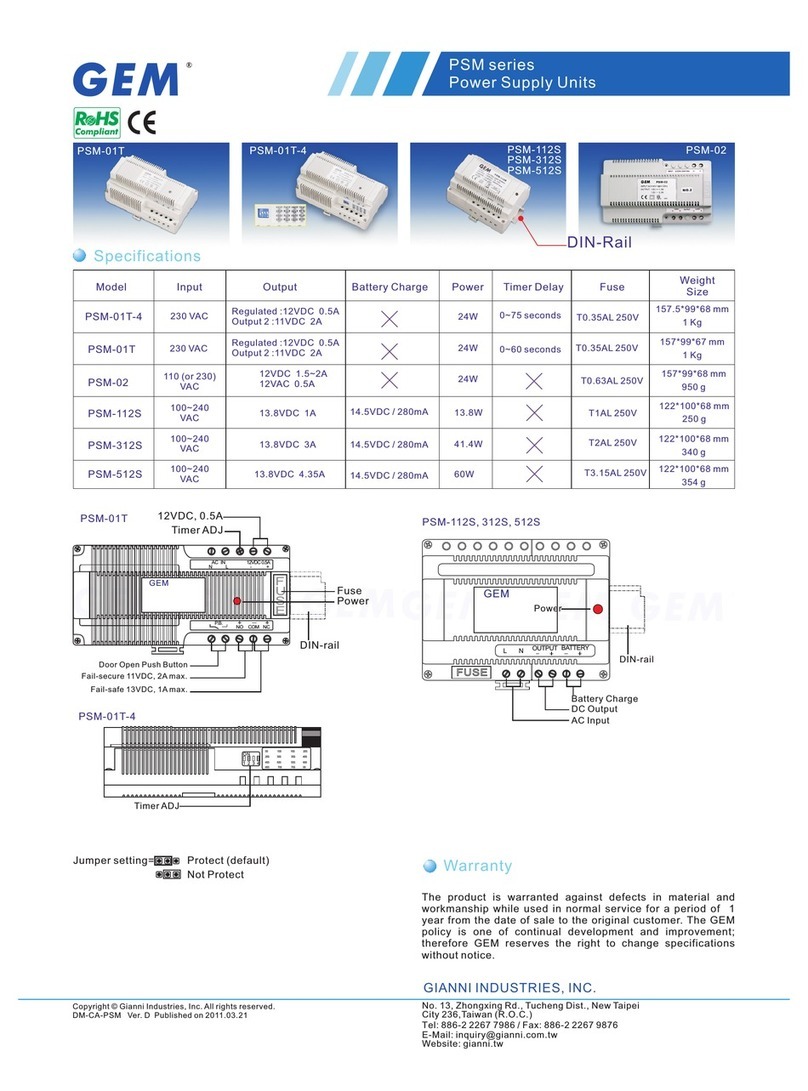
Gianni Industries
Gianni Industries GEM PSM-01T-4 Specifications
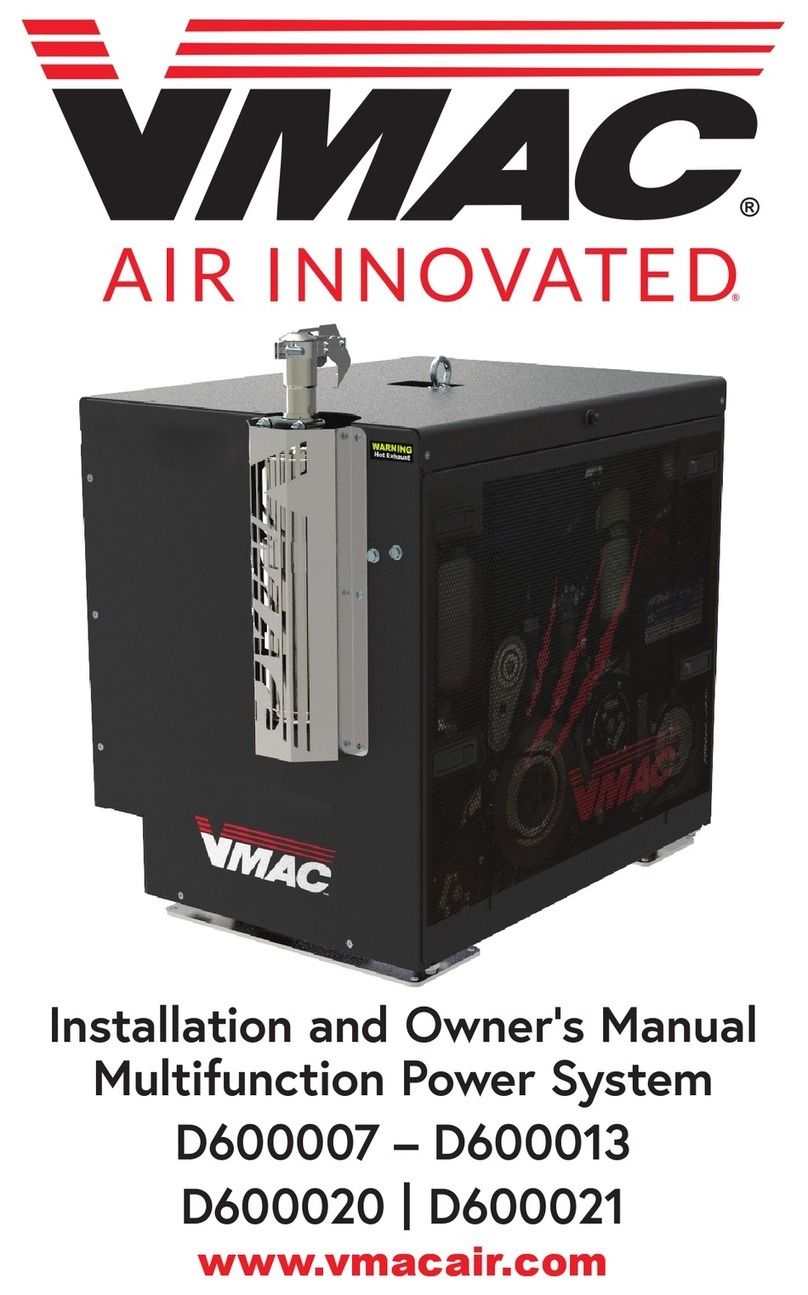
Vmac
Vmac D600013 Installation and owner's manual
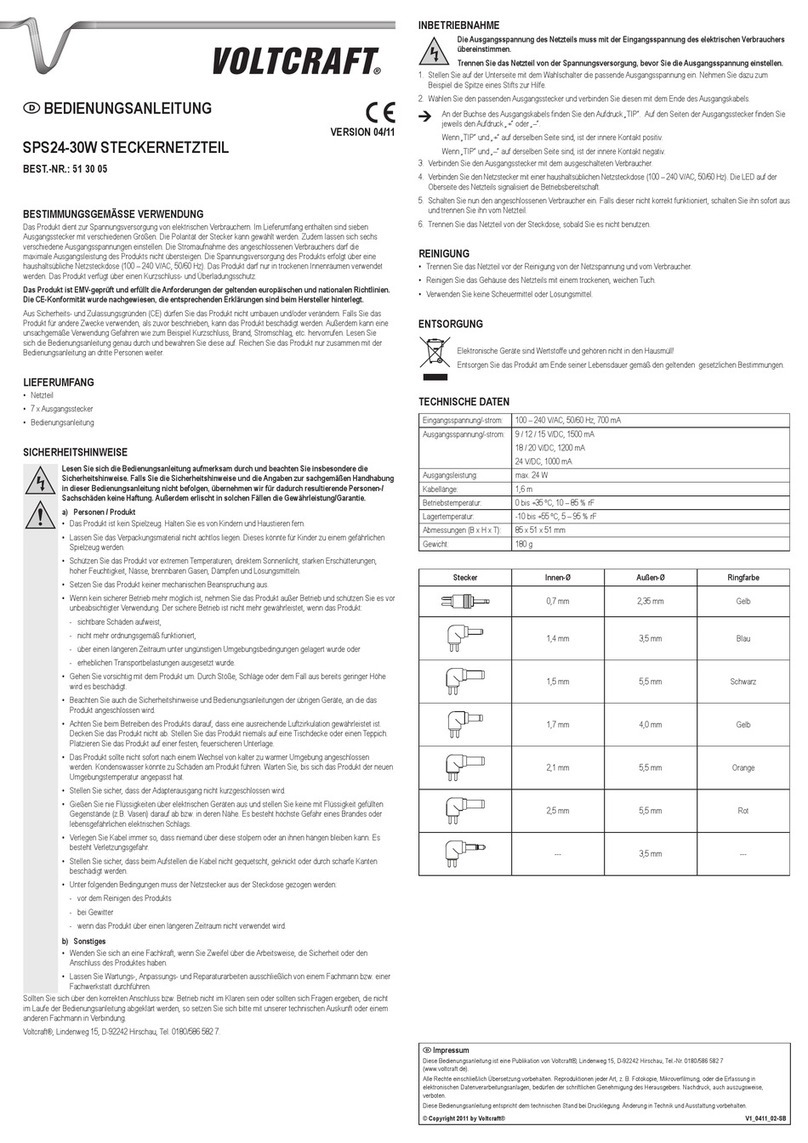
VOLTCRAFT
VOLTCRAFT SPS24-30W operating instructions
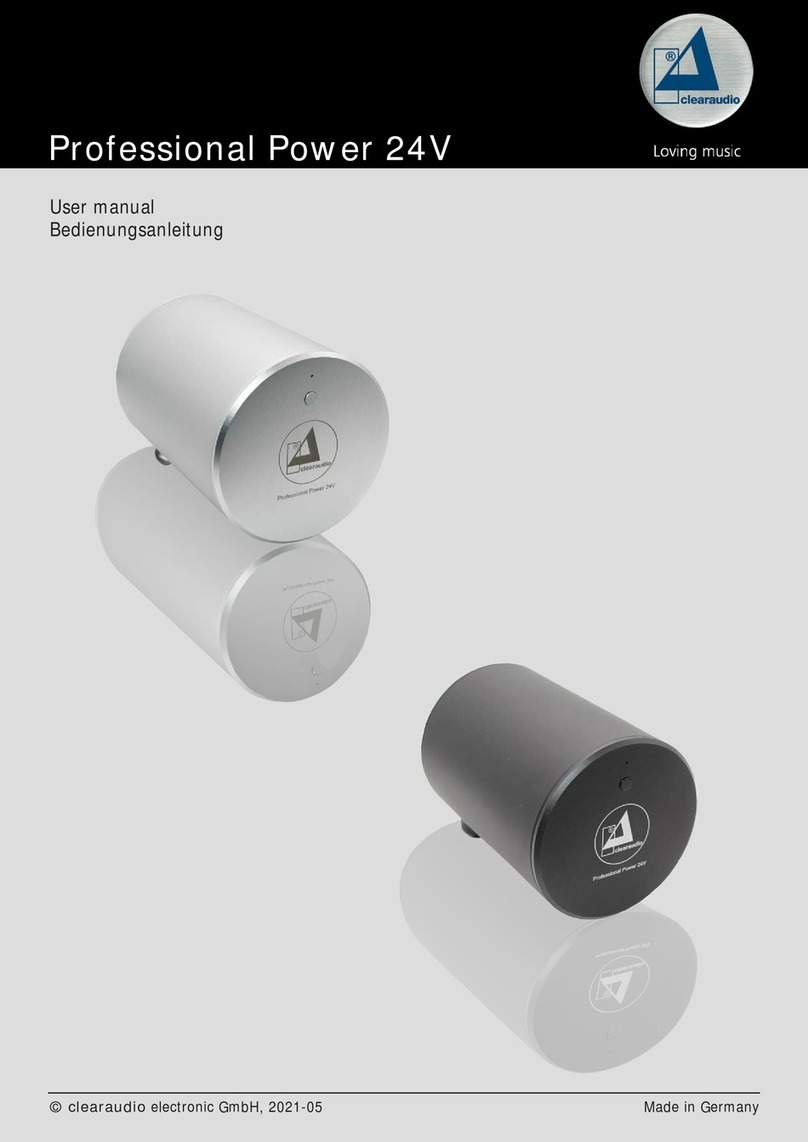
Clearaudio
Clearaudio Professional Power 24V user manual
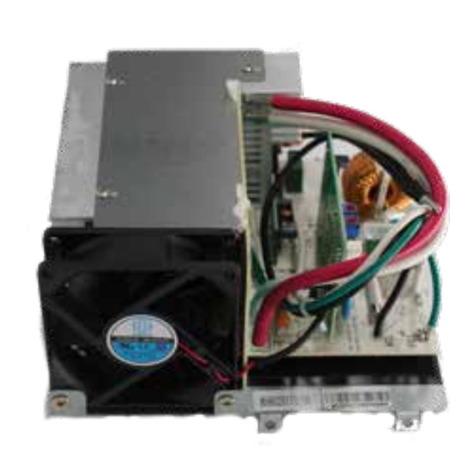
WFCO
WFCO WF-8500-AD-MBA Series Operator's manual
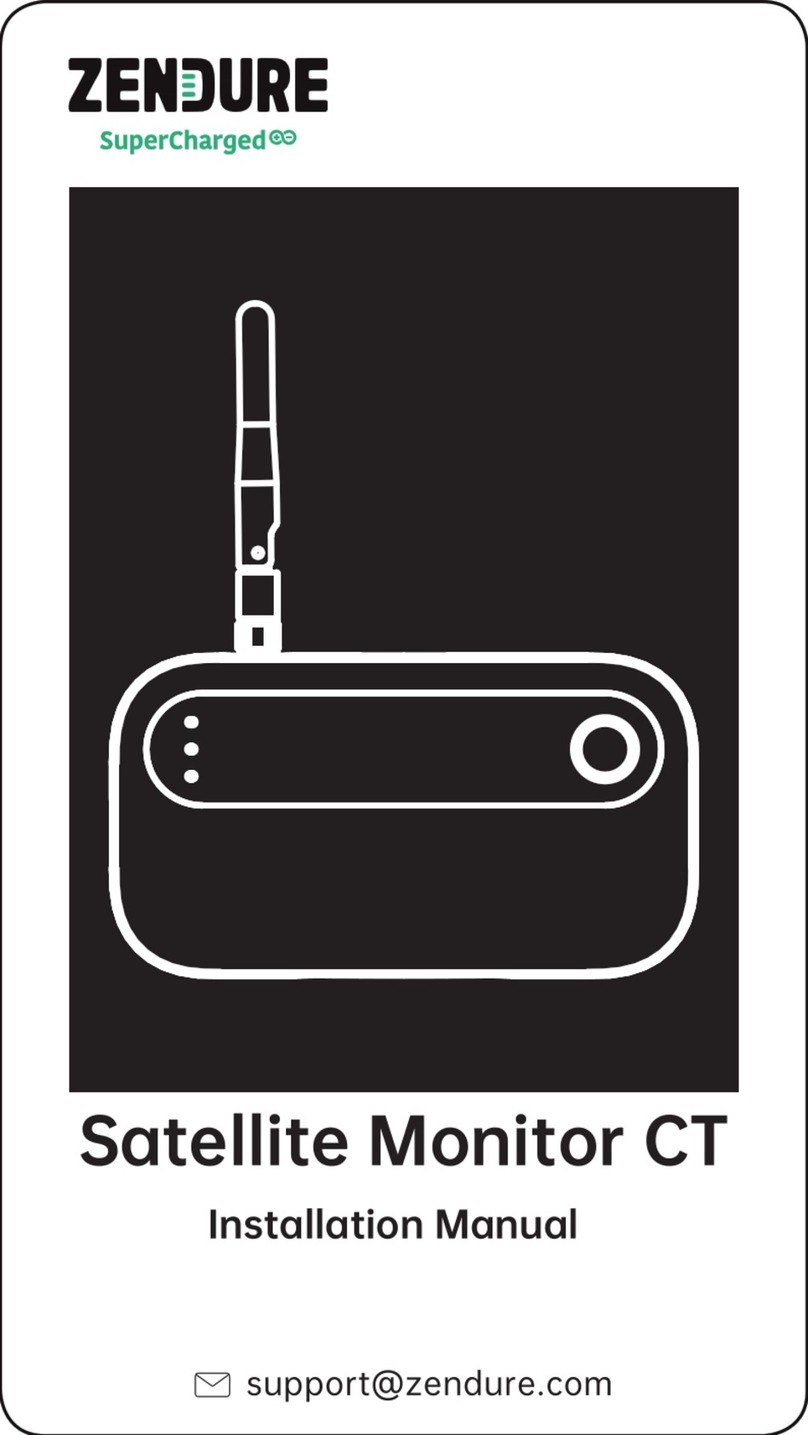
Zendure
Zendure Satellite Monitor CT installation manual

